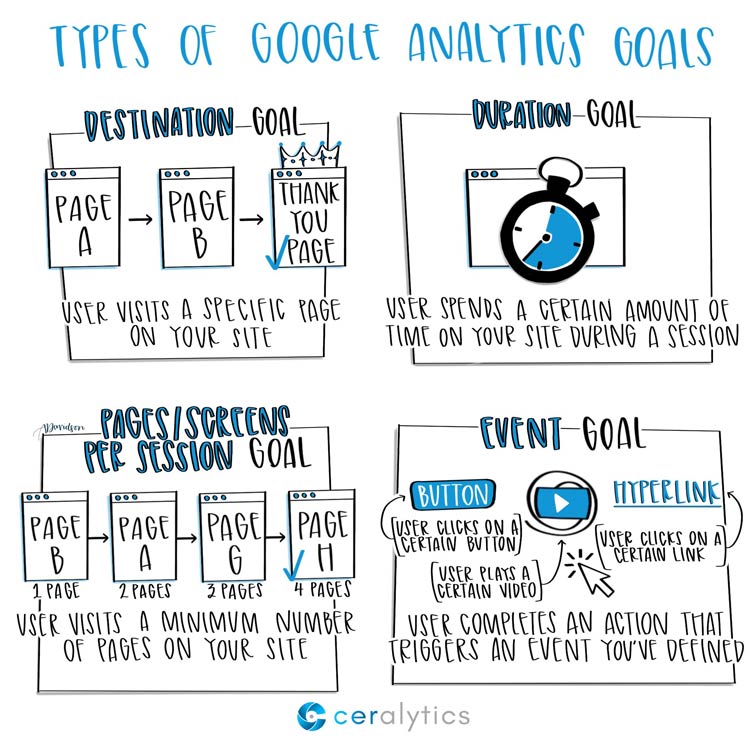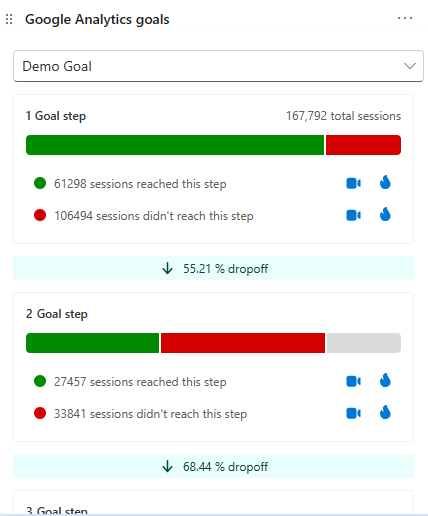Discovering What Data Is Google Analytics Goals Unable to Track
Discovering What Data Is Google Analytics Goals Unable to Track
Blog Article
Unveiling the Blind Spots: Comprehending What Google Analytics Goals Can not Gauge
In the world of digital analytics, Google Analytics stands as a powerful device for monitoring and assessing on-line customer communications. However, amidst its robust capacities, there exist unseen areas that often avert dimension. Comprehending what Google Analytics objectives can not measure is critical for acquiring an extensive view of user habits and involvement. As we look into the ins and outs of these dead spots, we discover a complicated internet of undiscovered territories that hold valuable insights right into user actions and inspirations, tough conventional wisdom and shedding light on the constraints of our data-driven understanding.
Individual Behavior on External Platforms
Comprehending exactly how customers interact on outside platforms is essential for enhancing on-line techniques. Outside systems, such as social media sites networks, recommendation web sites, and online forums, play a substantial function in driving traffic to a business's site. By examining user actions on these platforms, companies can obtain useful insights into the efficiency of their advertising initiatives and the choices of their target audience.
One secret facet of individual behavior on external systems is the reference resource. By tracking where the individuals are coming from, businesses can identify which systems are driving one of the most traffic to their website. This info can aid business allocate their sources more properly, focusing on the systems that yield the best results.

Offline Conversions and Interactions
Assessing individual actions on external platforms provides beneficial insights right into on the internet methods; nonetheless, thinking about offline conversions and communications is equally essential for a comprehensive understanding of a business's general performance. While Google Analytics stands out at tracking online interactions, it drops short in catching the total consumer trip that commonly consists of offline touchpoints. Offline conversions, such as in-store purchases or phone inquiries, play a considerable function in many services' success. Overlooking these interactions can lead to an altered view of the effectiveness of advertising projects and overall organization efficiency.

Acknowledgment Beyond Last Click
When diving into the realm of digital marketing analytics, it comes to be vital to look beyond the single touchpoint of the last click for a much more thorough understanding of acknowledgment. While Google Analytics provides valuable understandings into customer habits, relying entirely on last-click acknowledgment can be limiting - what data is google analytics goals unable to track. Attribution versions that surpass the last click provide an extra nuanced sight of the customer web link journey, taking into consideration all the touchpoints that lead to a conversion
Acknowledgment beyond the last click enables marketing experts to designate debt to numerous interactions along the conversion course, providing a clearer picture of the efficiency of different advertising and marketing networks. By discovering multi-touch acknowledgment designs such as straight, time decay, or position-based attribution, businesses can better allocate their advertising spending plans and optimize their techniques for maximum influence.
Recognizing the influence of each touchpoint in the conversion procedure is crucial for making educated decisions and making the most of ROI. By welcoming acknowledgment past the last click, businesses can acquire much deeper insights into customer actions and customize their advertising initiatives better.
Cross-Device and Cross-Browser Tracking

Similarly, cross-browser tracking enhances cross-device tracking by catching customer habits as they switch over between different internet browsers. Recognizing how customers connect with sites on various browsers can help marketing professionals optimize their on the internet experiences to ensure consistency and functionality across various platforms.
Qualitative Information and Individual Intent
Understanding individual intent through qualitative data evaluation is vital for establishing targeted digital advertising methods that reverberate with the needs and choices of the target audience. Qualitative information gives understandings into the 'why' behind customer actions, shedding light on inspirations, feelings, and choices that the original source quantitative data alone can not catch. By examining individual feedback, remarks, and communications, marketers can reveal useful info about customer intent, permitting them to tailor their messaging, content, and offerings to much better line up with what their audience is looking for.
Qualitative data also assists in comprehending the context in which users involve with a site or app. This contextual understanding makes it possible for marketing professionals to create even more individualized and relevant experiences, ultimately driving greater engagement and conversion prices. By delving right into individual intent through qualitative information analysis, services can acquire a much deeper understanding of their target audience, leading to extra effective advertising and marketing techniques that fulfill individuals' assumptions and demands.
Final Thought
In verdict, Google Analytics objectives have constraints in determining user actions on outside systems, offline conversions, acknowledgment past last click, cross-device and cross-browser monitoring, and qualitative information associated with individual intent. what data is google analytics goals unable to track. It is very important for organizations to be conscious of these dead spots in order to supplement their data analysis with other tools and approaches to gain a much more extensive understanding of their audience and see enhance their general electronic advertising and marketing strategies
By examining user behavior on these systems, organizations can get important insights into the effectiveness of their marketing efforts and the choices of their target audience.
Evaluating individual habits on external systems provides useful understandings right into on the internet methods; nonetheless, considering offline conversions and communications is equally crucial for a thorough understanding of a business's overall performance.In digital advertising analytics, relocating beyond last-click attribution to check out cross-device and cross-browser tracking is vital for acquiring an alternative understanding of individual interactions across various systems and tools. By examining individual comments, comments, and interactions, online marketers can uncover valuable details concerning individual intent, enabling them to tailor their messaging, web content, and offerings to much better line up with what their audience is looking for.
By diving into user intent via qualitative information analysis, businesses can obtain a much deeper understanding of their target audience, leading to a lot more efficient marketing approaches that fulfill individuals' assumptions and needs.
Report this page